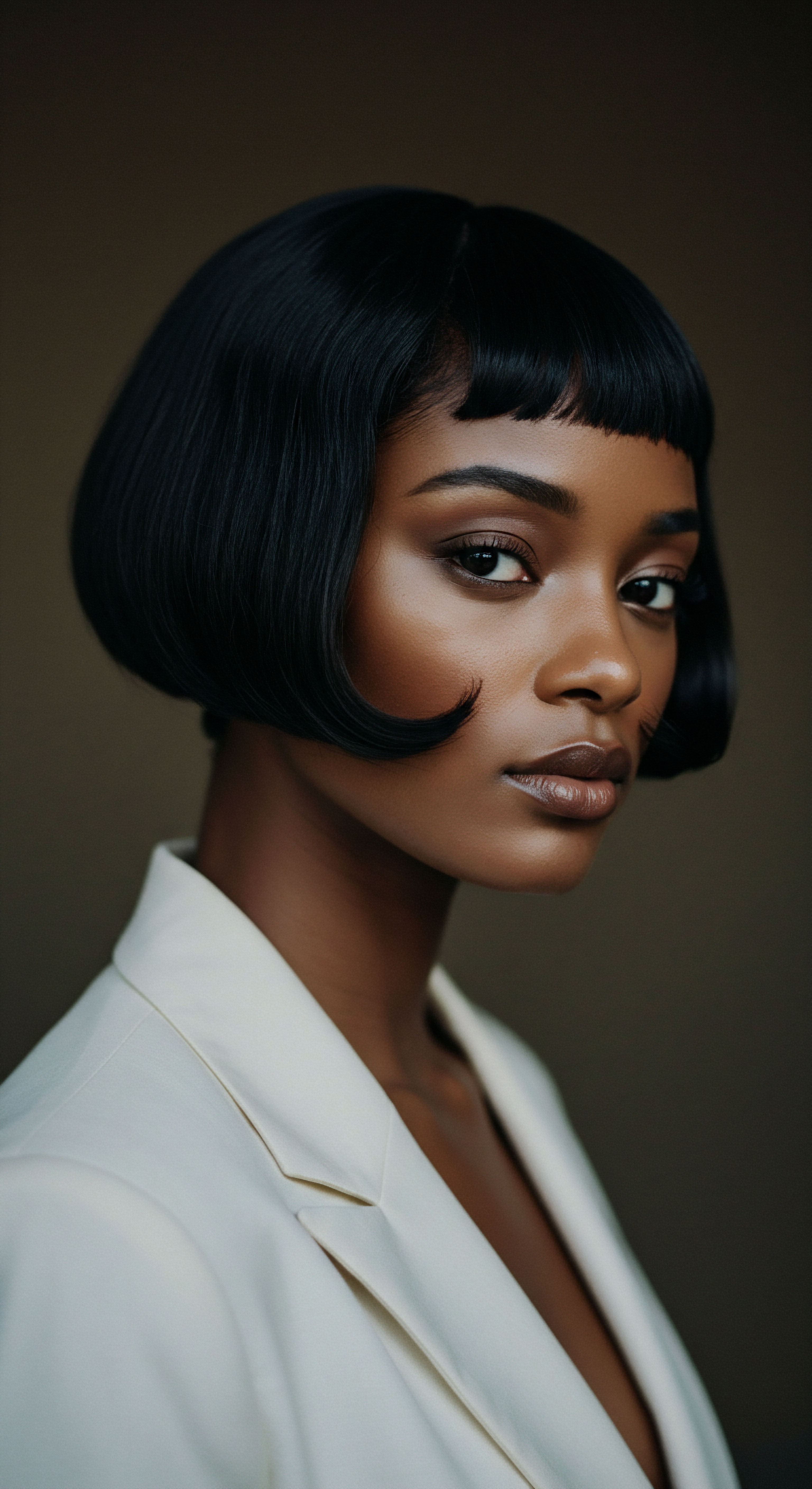
Roots
The whisper of ancient hands tending to hair, a ritual passed through generations, holds more than just cultural weight. It carries a profound understanding of material science, a wisdom honed over millennia. Consider the enduring quest for healthy hair, a pursuit that echoes from the sun-drenched plains of ancient Egypt to the vibrant, bustling salons of today.
This enduring human desire for well-being and expression, so often reflected in our hair, forms a continuous line from early ingenuity to our present scientific advancements. What were those early methods, and how do their foundational principles resonate with the precise language of modern fabric science?
Hair, at its very core, is a biomaterial, primarily composed of protein. Specifically, it is made of Keratin, a fibrous structural protein also found in nails, hooves, and wool. This protein, formed from a complex arrangement of amino acids, gives hair its strength, elasticity, and overall character.
The outer layer, the cuticle, acts as a protective shield, much like the surface of a textile fiber. Beneath this lies the cortex, the main bulk of the fiber, which holds the hair’s pigment and contributes significantly to its mechanical properties.
Ancient civilizations, without the aid of electron microscopes or chemical analyses, observed hair’s behavior. They noticed its response to moisture, heat, and various natural substances. This observation led to the development of practices that, by intuition, aligned with the fundamental properties of protein fibers.
For instance, the use of oils like Castor Oil and Almond Oil in ancient Egypt was not merely for cosmetic sheen. These emollients provided protection from environmental damage, creating a barrier that likely mimicked the hydrophobic nature of healthy hair, which repels water and prevents moisture loss.
The timeless human desire for healthy hair reveals a deep, intuitive understanding of its material properties, echoing from ancient traditions to current scientific discoveries.
Across various cultures, early hair care was deeply intertwined with available natural resources. In ancient India, Ayurvedic traditions incorporated ingredients such as Amla, Shikakai, and Neem for cleansing and nourishing the scalp. These plant-based elements offered benefits beyond simple cleaning, promoting scalp health and potentially strengthening hair.
Similarly, in North Africa, the Berber people used Rhassoul Clay for cleansing, a practice now understood to work through an electrochemical process where negatively charged clay minerals attract positively charged impurities and excess oils. This highlights an early, empirical grasp of chemical interactions, a concept now codified in modern material science.
Consider the structure of keratin itself. It consists of alpha-helical coiled single protein strands that further twist into superhelical ropes. These intricate formations contribute to hair’s unique mechanical properties. When compared to other natural fibers, such as plant-based cellulose fibers (like cotton), animal-derived protein fibers (like hair, wool, and silk) exhibit distinct characteristics.
Protein fibers, for example, do not hold up well to alkalis (high pH) but generally withstand acids, whereas cellulose fibers react differently. This chemical sensitivity was, in effect, managed by ancient practices, even if the underlying chemistry remained unknown to them.
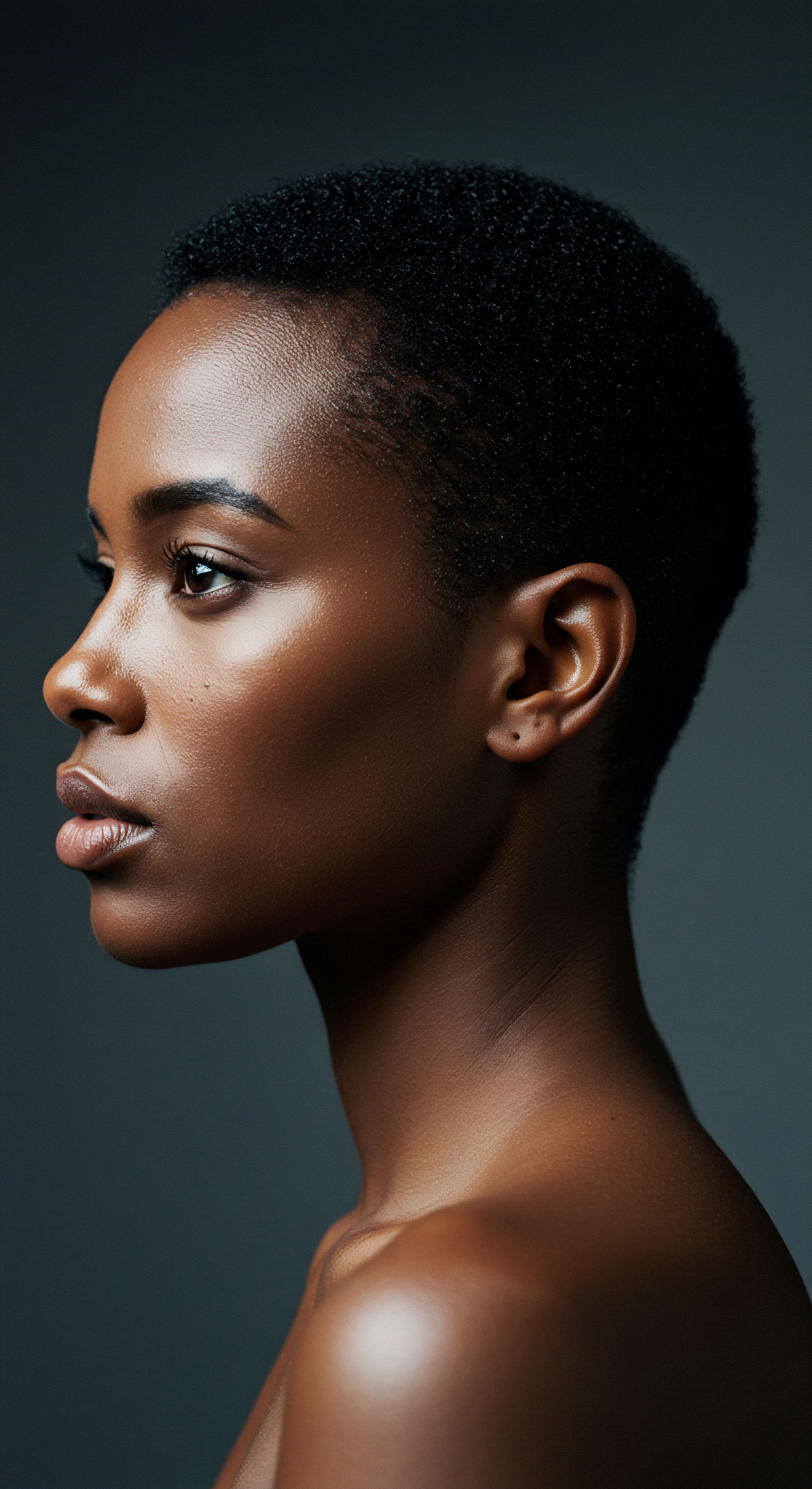
What Did Ancient Cultures Understand About Hair Fiber Properties?
The practical knowledge held by early communities regarding hair’s fiber properties was truly remarkable, despite lacking formal scientific terminology. They recognized that hair, like other natural fibers, required specific conditions for optimal health. The application of various plant oils, for example, served to condition and protect the hair.
These oils, rich in fatty acids, would coat the hair shaft, effectively reducing friction and assisting in moisture retention. This effect is akin to how modern textile finishes are applied to fabrics to alter their surface properties, improving their feel or durability.
Furthermore, historical practices often involved gentle handling and specific manipulation techniques. Braiding, twisting, and coiling were not just aesthetic choices; they also served as protective measures, minimizing exposure to environmental stressors and reducing mechanical damage. This parallels modern fabric care, where gentle washing cycles and specific drying methods are advised to maintain the integrity of delicate materials. The recognition that excessive force or harsh treatments could compromise hair’s integrity was a practical observation, mirroring today’s understanding of how physical stress impacts fiber strength and longevity.

How Does Hair’s Molecular Makeup Compare to Textile Fibers?
Hair’s molecular makeup, primarily alpha-keratin, shares similarities with other animal-derived protein fibers used in textiles, such as wool and silk. These are distinct from plant-derived cellulose fibers.
- Keratin ❉ The dominant protein in hair, it forms helical structures that provide resilience and elasticity. This is comparable to the complex protein structures in wool, which also give it unique thermal and moisture-regulating properties.
- Amino Acids ❉ Hair keratin is composed of 18 amino acids, with cysteine being particularly significant due to its role in forming disulfide bonds. These bonds contribute immensely to hair’s stability and strength, allowing it to retain its shape and resist deformation. Textile protein fibers like silk also comprise amino acids, though their specific arrangements and bond types lend different properties.
- Hydrophobicity ❉ Healthy hair exhibits a non-polar hydrophobic character, meaning it repels water. This is a desired property in many technical textiles for water resistance. Ancient oils would have augmented this natural repellency, protecting the hair shaft from excessive water absorption and subsequent swelling, which can lead to cuticle damage.
The comparison of hair to textile fibers highlights that both are complex materials whose properties are determined by their molecular architecture and chemical composition. The intuitive methods of ancient hair care, therefore, often worked in concert with these inherent material characteristics, offering protection and promoting longevity long before the advent of advanced scientific analysis.
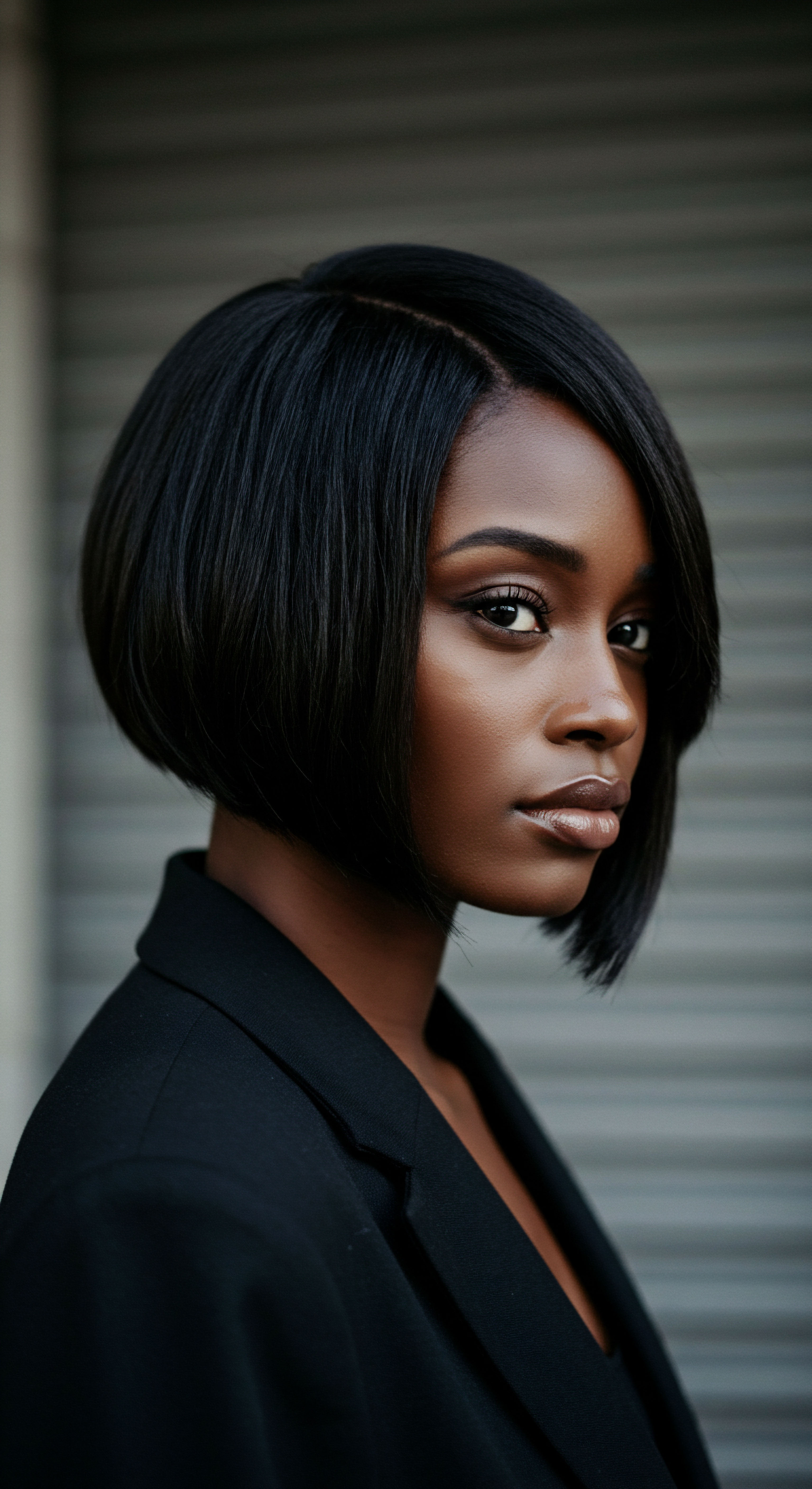
Ritual
Moving from the foundational understanding of hair as a material, we now turn to the daily rhythms and ceremonial acts that have shaped its care across civilizations. The transition from abstract knowledge to practical application feels like stepping into a shared space of timeless wisdom, where each gesture in a hair care ritual holds layers of purpose. How did these practices, often steeped in cultural significance, inherently reflect an understanding of hair as a delicate fiber, akin to a cherished fabric?
Historical hair care practices often revolved around gentle manipulation and the strategic application of natural compounds. Consider the widespread use of oils and plant infusions. In ancient Egypt, olive and castor oils were used not just for shine but also for their protective qualities against the harsh desert climate.
These oils, composed of fatty acids, would coat the hair shaft, effectively reducing friction and helping to seal in moisture. This effect is remarkably similar to how modern fabric softeners or conditioning agents work on textiles, by depositing a lubricating layer that reduces fiber-to-fiber friction, leading to a smoother feel and improved drape.
Ancient hair rituals, often symbolic, inherently applied principles of material science to preserve hair’s delicate structure.
The act of braiding, prevalent in many African cultures, served multiple purposes. Beyond its aesthetic and social communication functions, braiding acted as a significant protective measure. By grouping strands together, it minimized individual hair exposure to environmental stressors such as sun and wind, and reduced mechanical abrasion from daily activities.
This parallels the modern textile industry’s use of specific weaves or finishes to enhance the durability and longevity of fabrics, particularly those subjected to frequent wear. The structural integrity of a braid, like the strength of a woven textile, relies on the organized arrangement of individual components to resist external forces.
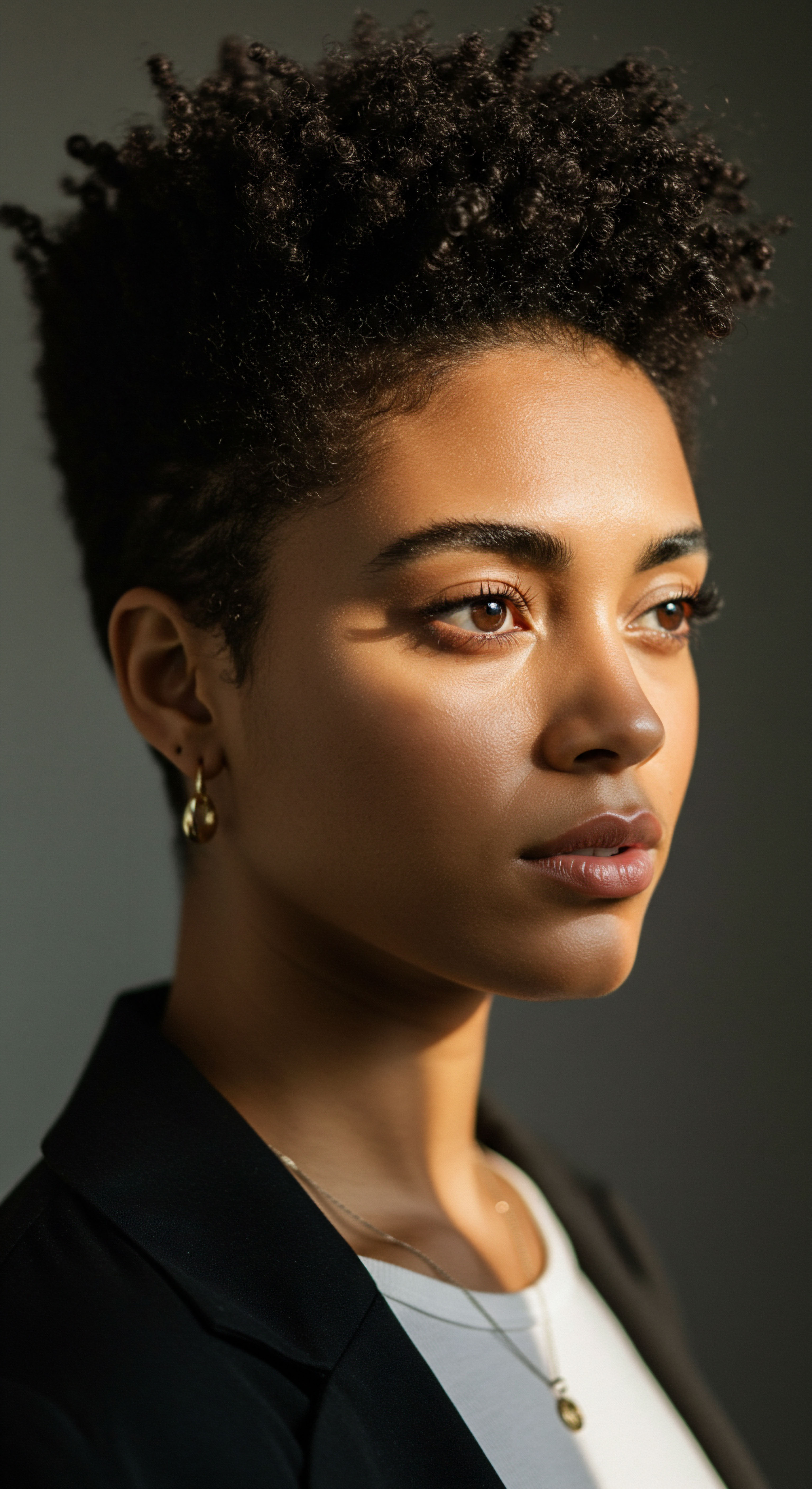
Do Ancient Hair Care Methods Mirror Modern Textile Preservation?
Indeed, ancient hair care methods display striking parallels with modern textile preservation techniques. Both disciplines seek to maintain the integrity and appearance of fibrous materials over time.
- Moisture Balance ❉ Ancient cultures utilized humectants and emollients from nature to keep hair hydrated, preventing brittleness. This aligns with modern fabric science, where controlled humidity and conditioning agents are used to preserve the flexibility and prevent degradation of natural fibers like wool and silk.
- Friction Reduction ❉ The use of smooth materials, like silk head coverings or wraps, to protect styled hair at night, has ancient roots. This directly correlates with the modern understanding of friction’s damaging effect on fibers. Studies confirm that smoother fabrics, such as silk, significantly reduce friction compared to cotton, minimizing hair shaft damage, frizz, and breakage.
- Cleansing Without Stripping ❉ Traditional cleansing agents, often plant-based or clay-based, aimed to purify the scalp and hair without excessively stripping natural oils. This reflects a subtle understanding of maintaining the fiber’s lipid barrier, much like modern gentle detergents are formulated to clean delicate fabrics without compromising their inherent protective layers.
These similarities highlight an underlying, perhaps intuitive, grasp of material science. The longevity of historical hairstyles and the health of hair in ancient populations speak to the effectiveness of these methods, which were, in essence, early forms of applied fiber science.

How Did Traditional Practices Anticipate Fiber Mechanics?
Traditional practices often anticipated principles of fiber mechanics, even without explicit scientific terms. The observation that certain manipulations or applications led to desired outcomes speaks volumes.
For instance, the practice of applying oils before combing or detangling, common in many cultures, reduced the mechanical stress on individual strands. This reduces the coefficient of friction between hair fibers, making them less likely to snag, stretch, or break. Modern fabric softeners achieve a similar effect on textiles, allowing fibers to glide past one another with less resistance, reducing wear and tear.
The creation of elaborate, long-lasting styles through twisting, coiling, and binding also demonstrates an understanding of how to manipulate fiber structure for stability. These techniques, by organizing hair into cohesive units, effectively distributed tension and reduced localized stress points, thereby preserving the hair’s mechanical strength. This is akin to how engineers design textile structures with specific yarn twists and fabric constructions to achieve desired levels of tensile strength and durability. The resilience of hair, particularly textured hair with its unique coiled structure, was implicitly understood and managed through these traditional practices, ensuring both beauty and durability.
| Historical Practice Oil Application (e.g. Castor, Olive) |
| Hair Benefit Reduced friction, moisture retention, environmental protection |
| Modern Fabric Science Analogue Fabric conditioners, hydrophobic coatings for water resistance |
| Historical Practice Protective Styling (e.g. Braids, Twists) |
| Hair Benefit Minimized mechanical damage, environmental exposure reduction |
| Modern Fabric Science Analogue Specific fabric weaves for durability, protective finishes |
| Historical Practice Natural Cleansing Agents (e.g. Clay, Plant Extracts) |
| Hair Benefit Gentle cleansing, lipid barrier preservation |
| Modern Fabric Science Analogue Mild detergents for delicate fabrics, pH-balanced cleansers |
| Historical Practice Nighttime Head Coverings (e.g. Silk, Satin) |
| Hair Benefit Reduced friction, maintained style, moisture retention |
| Modern Fabric Science Analogue Smooth linings in garments, low-friction bedding materials |

Relay
Our exploration now shifts to a deeper examination, moving beyond observed practice into the intricate interplay of science, culture, and material composition. How do the molecular structures of hair and fabric fibers dictate their interactions, and what profound lessons can be drawn from historical care traditions when viewed through the lens of contemporary material science? This section seeks to unravel the complex connections that underpin seemingly simple acts of care, revealing the shared principles that bridge ancient wisdom and cutting-edge research.
Hair, particularly textured hair, possesses a unique helical and coiled structure, influencing its mechanical properties and susceptibility to damage. This architecture affects how moisture is absorbed and released, how friction impacts the cuticle, and how the hair responds to external forces. Modern fabric science grapples with similar challenges when designing textiles for specific performance characteristics, such as moisture-wicking athletic wear or durable outdoor gear. Both hair and advanced textiles are engineered, either by nature or by human design, to withstand environmental stressors and mechanical wear.
The protein Keratin, the primary component of hair, is a complex fibrous material. Its strength and elasticity are largely due to disulfide bonds between cysteine amino acids. These bonds provide structural stability, allowing hair to stretch and return to its original shape.
When these bonds are compromised, through chemical treatments or excessive mechanical stress, hair becomes weak and prone to breakage. This vulnerability is analogous to the degradation of synthetic polymers in textiles when exposed to harsh chemicals or extreme physical strain, leading to a loss of tensile strength and integrity.
Hair and fabric fibers, though distinct in origin, share fundamental material science principles governing their interactions and long-term well-being.
A significant area of alignment between historical hair care and modern fabric science concerns the management of friction and moisture. Ancient cultures instinctively used smooth coverings, like silk or satin, for hair protection during sleep. This practice, often rooted in practicality and preservation of intricate styles, is now supported by scientific understanding of surface friction. Studies have shown that cotton pillowcases, with their absorbent and rougher fibers, create more friction against hair, leading to tangling, frizz, and breakage.
In contrast, silk’s smooth surface allows hair to glide with minimal resistance. A study published in the Journal of Cosmetic Dermatology confirms that smoother fabrics like silk help prevent hair shaft damage caused by repeated friction. This reduction in mechanical stress helps maintain the integrity of the hair cuticle, analogous to how low-friction linings are used in high-performance garments to prevent abrasion and extend the life of the fabric.
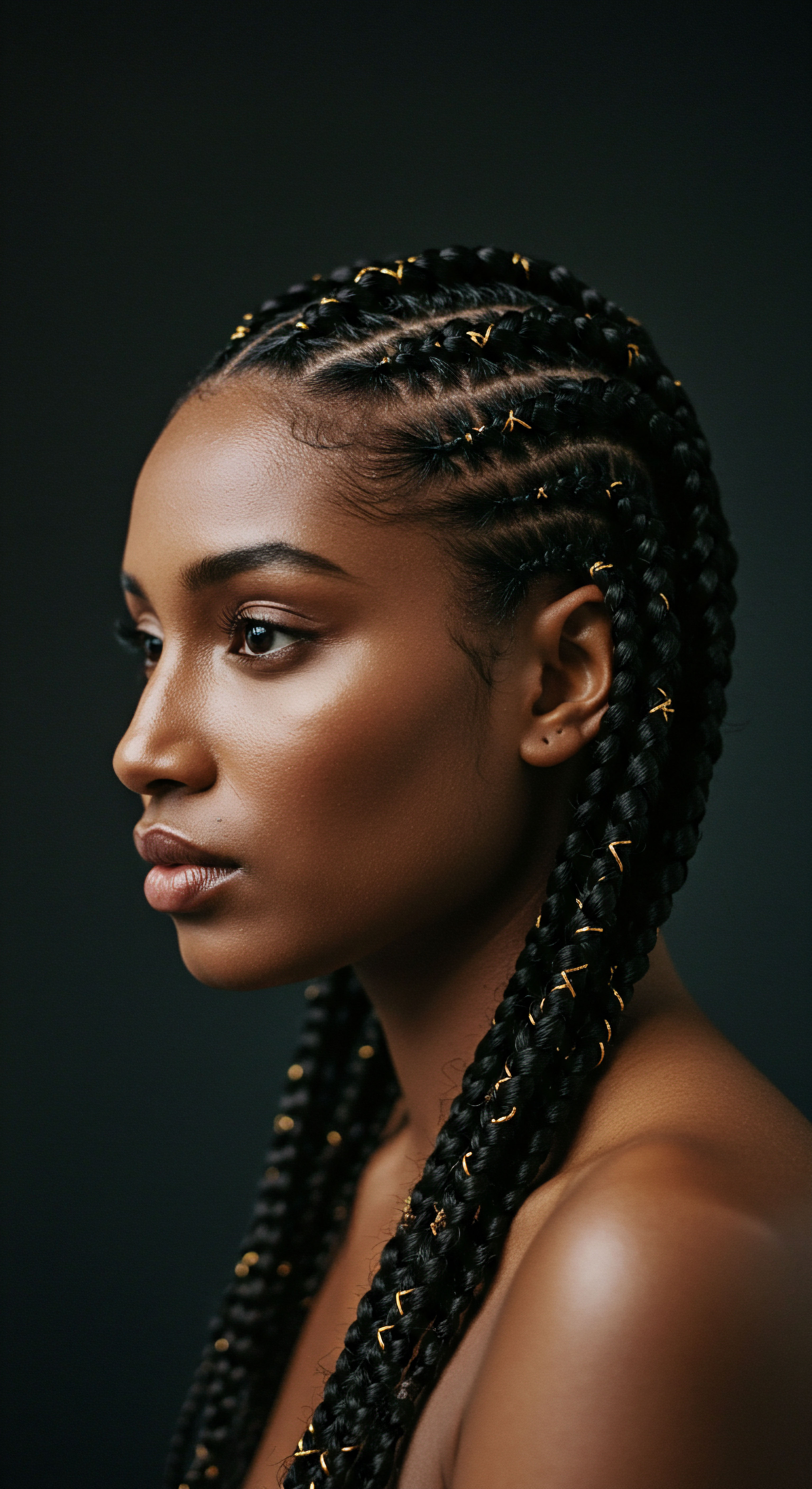
What Scientific Data Supports Ancient Practices for Hair Preservation?
Scientific inquiry increasingly validates the wisdom embedded in historical hair care practices, particularly concerning the preservation of hair’s structural integrity. One compelling area of research relates to the impact of traditional protective styles. For instance, braiding, a practice with deep cultural roots in African communities, was not merely a stylistic choice but a method of safeguarding hair.
A study quantifying the impact of braiding on natural African hair revealed significant insights. Researchers used techniques such as scanning electron microscopy, cuticle cohesion, and tensile testing to assess the effects of frequent braiding on hair integrity. The findings indicated a direct relationship between surface and internal hair fiber damage and braiding frequency. Specifically, women who frequently braided their hair (more than eight times a year) exhibited thinner hair, more cuticle damage, and significantly weaker hair fibers compared to occasional braiders.
This counter-intuitive result, where a seemingly protective style contributes to damage under certain conditions, highlights the complex interplay of technique, frequency, and inherent hair properties. While braiding can protect from external environmental factors, the tension and manipulation involved, especially when done frequently or too tightly, can compromise the hair’s mechanical strength at the fiber level. This underscores the need for a balanced approach, acknowledging that even beneficial practices can have unintended consequences if not executed with a deep understanding of fiber mechanics. This research serves as a reminder that “protective” styles require careful application and consideration of individual hair resilience.
The application of oils, another ancient practice, also finds scientific backing. Traditional herbal hair oils, often rich in vitamins, antioxidants, and fatty acids, are known to promote healthy hair growth, reduce dandruff, and improve scalp health. Coconut oil, for example, with its lauric acid, can penetrate the hair shaft, reducing protein loss and protecting hair from damage, a benefit observed in studies comparing it to mineral and sunflower oils. This ability to penetrate and reinforce the hair structure speaks to an early, empirical understanding of lipid-protein interactions, a field now extensively studied in cosmetic chemistry for both hair and textile treatments.

How Do Hair’s Hydrophobic Properties Align with Fabric Coatings?
Hair’s natural hydrophobic character, its ability to repel water, is a critical aspect of its health and appearance. The outer cuticle layer, when intact, is coated with a lipid layer, primarily 18-methyl eicosanoic acid (18-MEA), which contributes to this water repellency. This property is essential for maintaining moisture balance within the hair shaft and reducing friction between strands.
This aligns directly with modern fabric science, where hydrophobic coatings are applied to textiles to achieve water-repellent or waterproof properties. These coatings create a surface that minimizes water absorption, similar to how healthy hair resists becoming waterlogged.
- Lipid Layer Integrity ❉ Historical practices that preserved hair’s natural oils, such as gentle cleansing and the use of natural emollients, effectively maintained this hydrophobic layer. When this layer is disrupted, hair becomes more hydrophilic (water-attracting), leading to increased swelling, cuticle lifting, and greater friction.
- Mimicking Nature ❉ Modern hair care products often seek to restore or enhance hair’s hydrophobicity through silicones or cationic surfactants, which form a thin, hydrophobic layer on the hair surface. This mirrors the development of durable water-repellent (DWR) finishes in textiles, designed to shed water and protect the underlying fibers.
- Environmental Protection ❉ Just as DWR coatings shield outdoor fabrics from rain and moisture, the hydrophobic nature of hair, supported by traditional oiling practices, protects it from environmental humidity and water-induced damage. This common principle underscores the shared objective of preserving material integrity against external elements.
The intersection of historical hair care and modern fabric science reveals a cyclical wisdom. Ancient traditions, through trial and observation, developed methods that implicitly respected the fundamental material properties of hair. Contemporary science now provides the molecular and mechanical explanations for why these time-honored practices were, and remain, so effective. The goal, then and now, is to preserve the integrity of a complex protein fiber, whether it adorns a head or forms a cherished garment.

Reflection
As we step back from the intricate connections between historical hair care and modern fabric science, a quiet realization settles ❉ the wisdom of the past, often dismissed as mere folklore, carries a profound, empirically derived understanding of material properties. The hands that braided hair in ancient Africa, or smoothed it with oils in Egypt, were, in their own way, engaging in sophisticated material science. They observed, experimented, and refined techniques to preserve a protein fiber against the elements, against time, and against wear.
Our modern laboratories, with their precise instruments and complex formulations, are not so much inventing new principles as they are articulating, with exquisite detail, the principles that have always been at play. The journey of hair care, from the earliest human touch to today’s advanced research, serves as a beautiful testament to humanity’s persistent desire for health, beauty, and understanding, continually finding resonance between the ancient and the cutting-edge.
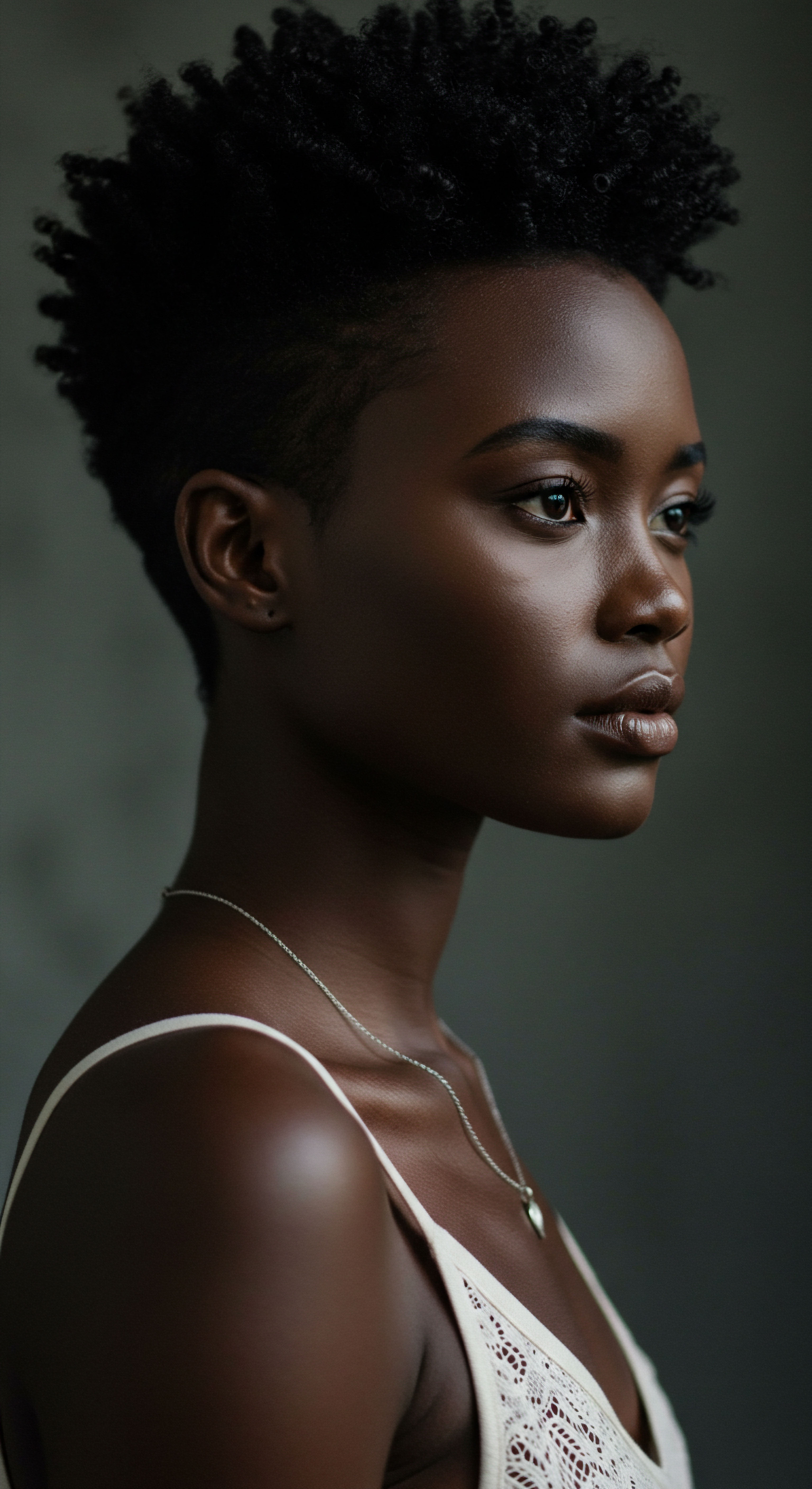
References
- Robbins, C. R. (2012). Chemical and Physical Behavior of Human Hair (5th ed.). Springer.
- Crewther, W. G. Dowling, L. M. & Fraser, R. D. B. (1983). The Structure of Alpha-Keratin. Academic Press.
- Rele, A. S. & Mohile, R. B. (2003). Effect of Mineral Oil, Sunflower Oil, and Coconut Oil on Prevention of Hair Damage. Journal of Cosmetic Science, 54(2), 175-192.
- Hanukoglu, I. & Fuchs, E. (1982). The cDNA Sequence of a Type II Keratin and Its Implications for Intermediate Filament Structure. Cell, 31(1), 257-268.
- Hanukoglu, I. & Fuchs, E. (1983). The cDNA Sequence of a Type I Keratin and Its Implications for Intermediate Filament Structure. Cell, 33(3), 915-924.
- Dias, M. F. R. G. et al. (2007). Hair Fiber Characteristics and Methods to Evaluate Hair Physical and Mechanical Properties. Cosmetics & Toiletries Brazil, 19(2), 56-62.
- Sivakami, S. & Suganya, V. (2021). Development and Evaluation of Herbal Hair Serum ❉ A Traditional Way to Improve Hair Quality. International Journal of Pharmaceutical Sciences Review and Research, 69(1), 164-169.
- Wong, N. Williams, K. Tolliver, S. & Potts, G. (2025). Historical Perspectives on Hair Care and Common Styling Practices in Black Women. Cutis, 115(3), 95-99.
- Nair, A. B. & Jacob, S. (2016). Essential Oils for Hair Health ❉ A Critical Mini-Review of the Current Evidence and Future Directions. Brazilian Journal of Aromatherapy and Essential Oils, 1(1), 1-8.
- Sanad, R. A. & Al-Amoudi, S. (2023). The Chemistry of Wellness ❉ Hair and Hair Care. Wiley-Blackwell.